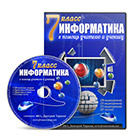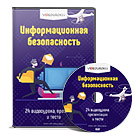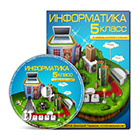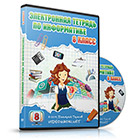| Long-term plan unit: 3 VALUES | School: I.Koshkinov | |||||
| Lesson 9 |
| |||||
| Date: 24.11.2017 | Teacher’s name: Kussainova Akbota | |||||
| CLASS: 5 | Number present: | absent: | ||||
| Theme of the lesson: My best friend | ||||||
| Learning objective (s) that this lesson is contributing to | 5.5.1.1- plan, write, edit and proofread work at text level with support on a limited range of general and curricular topics; 5.5.3.1- write with support factual descriptions at text level which describe people, places and objects; 5.5.5.1- link without support sentences using basic coordinating connectors; 5.5.8.1- spell most high-frequency words accurately for a limited range of general topics | |||||
| Lesson objectives | All learners will be able to: | |||||
| Most learners will be able to: • read a description of someone’s brother. • learn about the modifiers not very, quiteand really/very. • write a description of my best friend. | ||||||
| Some learners will be able to: | ||||||
| Success criteria |
| |||||
| Value links | Respect, openness
| |||||
| Cross curricular links | Kazakh, Russian | |||||
| Plan | ||||||
| Stages of the lesson | Planned activities (replace the notes below with your planned activities) | Teacher’s notes | ||||
| Greeting
| Greet students; students respond to greeting and take their places. Hello, boys and girls! How are you? |
| ||||
| Warm up | • Books closed. Write best friend on the board. Ask: Who is your best friend? Invite some students to tell the class something about their best friend, e.g. My best friend is called Mehmet. He’s 12. He lives in Istanbul. • You could also briefly describe your own best friend. Make sure your description is similar in style and content to the one seen in Exercise 1.
|
| ||||
| Practice | 1 • Ask students to open their books at page 35. • Students read the text quickly and answer the question. | Answer Javier Ramos | ||||
|
| 2 • Tell students that the chart refers to Javier from Exercise 1. • Ask students to work alone to copy and complete the missing information. | Answers Javier’s best friend Name David Age twenty Home with Mum and Dad Description tall, dark hair, green eyes, intelligentandfunny | ||||
|
| 3 • Read through the modifiers in the Useful language box. • Explain that modifiers such as quite or not very change (or modify) the next word in the sentence, e.g. I’m quite tired. My brother isn’t very tall. • Ask stronger students to translate the modifiers into their language. • Give weaker students bilingual dictionaries so that they can find out how the modifiers translate into their language before they look in the description for examples of such words. • Check answers. | Answers He’s very intelligent, and quite funny, too! My brother’s great, and he’s a very good friend. | ||||
| Language note Modifiers such as very are often stressed in a sentence, particularly when someone is surprised, excited or enthusiastic about what they are saying. | ||||||
|
| 4 • Students work alone to complete the sentences. • Ask some students to report back on how their partner has completed his or her sentences. |
| ||||
|
| Get Writing PLAN 5 • Students should do their planning in class. The writing can either be done in class or at home. • Tell students they are going to write a description of their best friend. • Refer students back to the chart in Exercise 2 and then ask them to work alone to complete the chart with notes about their best friend. |
| ||||
|
| WRITE 6. Refer students to the language in Exercise 6. Make sure that students know how to use it before you ask them to write their description. • Tell students to use Javier’s description of David as a model to follow. Encourage them to add extra information to their own descriptions, e.g. whether or not the person has brothers or sisters, that person’s interests, what that person usually does in his or her free time, etc. • Give students ten minutes to complete the writing task. • Monitor while students are writing. Help with grammar and vocabulary as necessary. • Encourage students to produce at least two drafts of their description. If students are doing this at home, ask them to write their descriptions on their computers rather than in their notebooks as it will allow them to change the text more easily. |
| ||||
|
| 7 • Tell students that it is very important that they check their writing in order to look for ways to improve its content, style and structure. • Give students a few minutes to look through their descriptions and check them against the points here. • Collect students’ descriptions and mark them. • Use students’ written work as a means of finding common errors. You can then use these as a basis for revision in the next lesson (but do not refer to who made the mistake). Also remember to share good sentences from students’ work with the rest of the class. |
| ||||
| Homework
| For homework, ask students to find an interesting description of a person. If you have a library in your school, students can borrow books (at the right level) from it. If not, ask them to find books in English in their local library. In the next lesson, students read out the description to a partner and then say why they like it, e.g. It’s very funny. You can also set Exercises 1–12 on pages 22 and 23 of the Workbook for homework. |
| ||||
| Additional Information | ||||||
| Differentiation - how do you plan to give more support? How do you plan to challenge the more able learners? | Assessment - how are you planning to check learners` learning? | Health and safety check ICT links | ||||
| More support will be given to weaker learners by giving them a modified worksheets in some tasks with greater support | -through questioning and the redirecting of questioning in feedback activities -through observation in group and end performance activities -through formative task
| -Health promoting techniques -Breaks and physical activities used. -Points from Safety rules used at this lesson. | ||||
| REFLECTION
| Answer the most relevant questions to reflect on your lesson. Were the lesson objectives/learning objectives realistic? What did the learners learn? What did/didn’t you like? What was difficult? | |||||

 Получите свидетельство
Получите свидетельство Вход
Вход












 Паурочный план по английскому языку (21.28 KB)
Паурочный план по английскому языку (21.28 KB)
 0
0 469
469 2
2 Нравится
0
Нравится
0





